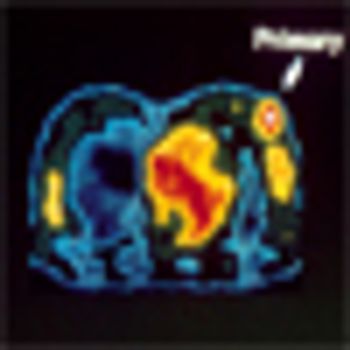
- Psychiatric Times Vol 24 No 10
- Volume 24
- Issue 10
Standing Up for Herself: Treating a Patient With Conversion Paraplegia
One day in 1946 while I was making neurology rounds, a crumpled piece of humanity was wheeled into the ward. When "Ora" came to the hospital for her annual epilepsy checkup, she had not been able to walk for more than a year.
One day in 1946 while I was making neurology rounds, a crumpled piece of humanity was wheeled into the ward.
When "Ora" came to the hospital for her annual epilepsy checkup, she had not been able to walk for more than a year. After numerous tests by the neurologists proved negative, it was concluded that her paraplegia was due to conversion hysteria. Now, the neurologists said, it was time for "the cure."
Drs "X" and "H," the chief and former chief of neurology, looked impressive in their stiff white coats. The witnesses to the procedure were the men and women in their beds on either side of the ward. Close at hand was the famous "black box" that delivered a mild shock to the muscles to test reflexes. With great flourish, Dr X administered a shock to each of the patient's knees. Ora's legs jumped dramatically. "See!" Dr X shouted. "There is nothing wrong with those legs! You can walk!"
Carefully, the doctors took Ora by the elbows and lifted her out of the wheelchair. With the patient's legs dragging between them, the doctors slowly walked down the long hall. Soon, Ora was taking little steps, and she then gradually picked up speed. When the doctors turned to come back, coat tails flying as they went, Ora's little legs held her weight as she struggled to keep up the pace. She was triumphant! Everyone was beaming, and the other patients clapped enthusiastically.
As if this drama was not enough to illustrate the extraordinary power of the unconscious, Dr X then hypnotized a nurse. After putting her through the usual regression to the state of a 6-year-old, he suggested to her that when she woke up she would not recognize that Dr H was in the room for 10 minutes. When the nurse came out of the trance, Dr X handed her a test tube and asked that she put a cork in it. Each time she tried, Dr H put his hand in the way. She was very puzzled as she struggled to perform the task. After 10 minutes, she saw the impediment and joined us all in laughter. In my many years as a psychotherapist, I have often used this story to begin the inquiry into whose "invisible hand" is getting in the way when a patient struggles in vain to understand something or complete a task.
Solidifying the cure by suggestion with psychotherapy
We knew Ora's cure would be short-lived if we did not help her understand why she had become paralyzed in the first place. Dr X had no respect for the department of psychiatry, but he was willing to keep her in the hospital for a few weeks for what would be one of my first attempts at psychotherapy. I was 26 and Ora was 34, but I felt in many ways that I was working with a small child. Ora lived alone with her older brother in a small town. Her brother was a successful lawyer who had a steady relationship with a woman. Ora had graduated from high school but had not been able to find employment because of her epilepsy. We were told by the gynecology department that she had a full-term pregnancy at one time, but Ora would not acknowledge this. Had this pregnancy-perhaps unwanted-caused the regression that had literally knocked Ora off her feet? What was the invisible hand that was getting in the way of Ora's ability to own her past?
One thing, however, was clear: Ora's intelligence was immediately apparent during our conversations. In the few sessions we had available, we worked on "reality issues" such as how to stand up to her controlling brother. Had her legs given out on her in the face of his domination-at the expense of a serious regression? Had the helplessness of her paralysis both protected her from his aggression and elicited his loving care? There was no time for prolonged, exploratory work, but I believe that the relationship we established helped Ora develop self-respect and the knowledge that she was not alone in her struggle. In the few weeks of therapy we shared, her self-confidence returned and she felt that she was ready to return home.
Since Ora kept in touch with me on the holidays for the rest of her long life, I can speculate on what our few sessions might have accomplished. The strength she gained in her relationship with me helped counteract the regression she had undergone in her present isolated and stultifying environment. And she carried within her my voice of respect and of inquiry as to cause and effect, which over time became assimilated into her observing ego. She continued to do well, with no recurrence of her paraplegia. When she felt bad, she drew on the memory of our sessions and found the strength to carry on. Eventually, with her epilepsy under control, Ora was able to become manager of an ice cream parlor in the town square. Her life was full. She remained generally well for the next 17 years.
Temporary relapse
When she was 51, Ora was temporarily paralyzed again. It is telling that she entered the hospital the day after her brother had been admitted with a fatal illness. Was she psychologically so fused with her brother that when his legs gave out, hers no longer functioned? Fortunately not, since when she wrote me 4 months later to tell me that her brother had died, she was-literally and emotionally-back on her feet. Her new-found strength was apparent in the way she was dealing with this terrible loss. It appears that her long-standing relationship with me was helping her buffer her grief; she wrote: "The Good Lord had made those plans for us. So we both could be in the same building when one's number was called. . . . Oh my, how I miss that dear smile and those words when we were together. . . . I sure do love you Dr Young and think of you every day. I sure wish I could be closer to you and see you and have a lovely visit."
Ora was lonely without her brother, but her business was going well and she was making friends. When she was 65, I was in her state for an exhibition of my photographs. She traveled a long distance by bus to visit with me. I could hardly believe that this nicely dressed, self-possessed woman was once the crumpled, defeated person I had known 30 years before. Five years later came the remarkable news that she had married a man who had lost his wife 2 years before. At his death some years later, Ora grieved appropriately-her feet were not cut out from under her.
Reintegrating the shattered self
The phenomenon of "cure by suggestion" has been well known since the days of Charcot. Freud was fascinated when he witnessed these experiments, but when he realized that the cures were only temporary, he found a way to make them permanent by searching for the unconscious meanings of the hysterical symptoms. Recent neuroimaging research is helping us understand what happens in the brain when conversion occurs. In the article "Neurobiology and Neuroimaging of Depersonalization, Conversion, and Dissociation," published in the June 2006 issue of Psychiatric Times (page 47), Drs Stéphane Poulin and Deborah Naomi Black discuss the work of Vuilleumier.1 "Loss of motor intention was interpreted as suppression of frontal-subcortical sensorimotor circuits by inhibitory stimuli originating from limbic structures." They end with the statement, "If deactivation of the self-network can be demonstrated in conversion patients, treatment can then be directed toward relevant brain pathways."
I cannot be sure what led to Ora's sustained remission from her conversion disorder. But it is intriguing to imagine that by solidifying her sense of self and her sense of self-worth, we had repaired the breaks in the self-circuitry in her brain and reactivated her "self-network." The brief but significant therapeutic relationship with me that Ora had been able to internalize and make part of her own increased ego functioning had reconnected a vital psychological and neurological circuit.
References:
Reference
1.
Vuilleumier P. Hysterical conversion and brain function.
Prog Brain Re
s
. 2005;150:309-329.
Articles in this issue
over 18 years ago
Clinical Depression: Complexities of Diagnosis and Managementover 18 years ago
The Substance Abuse Handbookover 18 years ago
Placebo Effects on Pharmacotherapy Outcomes in Major Depressionover 18 years ago
Never-Ending Winter: Chronic Depressionover 18 years ago
SSRIs and Pregnancy: Putting the Risks Into Perspectiveover 18 years ago
Can We Predict Response to Antidepressants?over 18 years ago
Not Obsolete: Continuing Roles for TCAs and MAOIsNewsletter
Receive trusted psychiatric news, expert analysis, and clinical insights — subscribe today to support your practice and your patients.

















